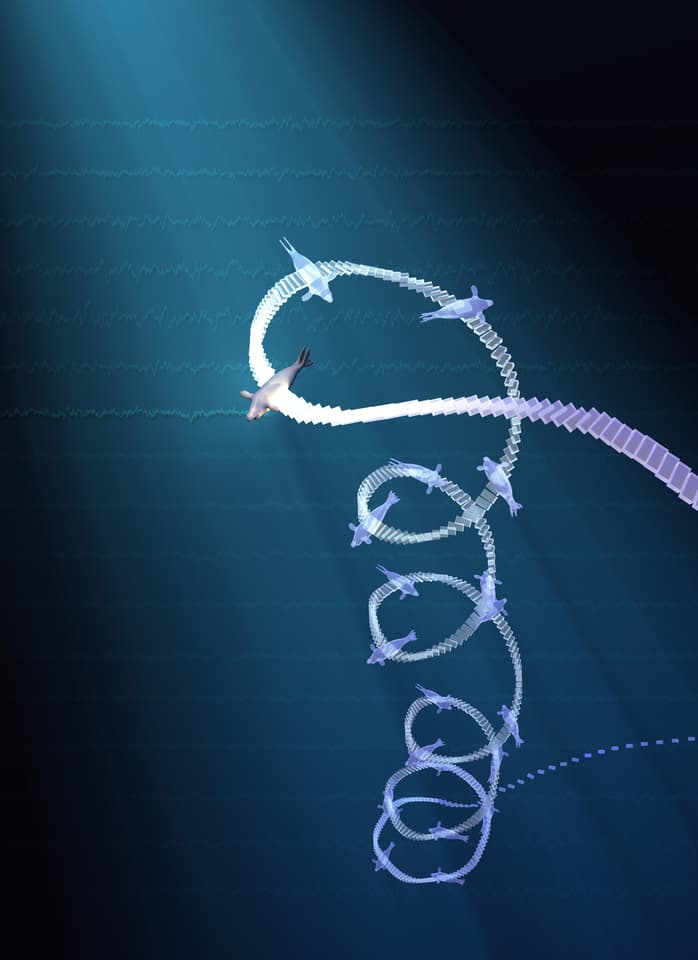How would you be able to sleep if you were surrounded by predators who might eat you as soon as you nodded off? Well, a new study shows that elephant seals manage it by only sleeping two hours a day, and doing so deep in the ocean.
Northern elephant seals lie on the beach throughout the breeding season, during which time they may sleep for as much as 10 hours a day.
That said, they also spend up to eight months of the year foraging for prey out at sea, never coming ashore the whole time. Scientists have therefore wondered just how much sleep they get during that period, and how they avoid predators such as sharks and killer whales while asleep.
In order to find out, researchers at the University of California Santa Cruz set about recording the movements and brain waves of juvenile female elephant seals which were captured from a beach at California’s Año Nuevo state park.
Before being released at the southern end of Monterey Bay, each animal had EEG (electroencephalogram) electrodes placed on the outside of its head, to monitor its brain activity. The electrodes were connected to a small data logger, and covered with a protective neoprene cap. All of the hardware – which also included time-depth recorders and accelerometers – was designed to be unobtrusive.
After the seals were released, they spent a few days swimming back to Año Nuevo across the deep undersea Monterey Canyon. Their diving patterns during that time were reportedly quite similar to those which had previously been documented on elephant seals’ months-long foraging trips. Upon reaching their destination, all of the seals’ headgear was removed by the scientists.
Based on EEG/dive data logged from 13 of the seals – combined with dive-depth data that was previously recorded in 334 adult seals during their foraging trips – it was determined that the animals typically only sleep for about two hours of every 24-hour period. They do so for about 10 minutes at a time, during deep “drift dives” performed throughout the day.

Jessica Kendall-Bar
The seals slowly spiral downwards as they sleep – sometimes actually ending up lying on the seafloor – reaching depths where their predators are seldom if ever present. In fact, most shark and killer whale attacks on elephant seals occur when the seals are awake and at the surface, breathing.
“Elephant seals are unusual in that they switch between getting a lot of sleep when they’re on land, over 10 hours a day, and two hours or less when they’re at sea,” said lead scientist Jessica Kendall-Bar, who is presently a postdoctoral fellow at UC San Diego’s Scripps Institution of Oceanography. “They’re able to hold their breath for a long time, so they can go into a deep slumber on these dives deep below the surface where it’s safe.”
A paper on the research was recently published in the journal Science.
Sources: UC Santa Cruz, American Association for the Advancement of Science via EurekAlert
Source of Article